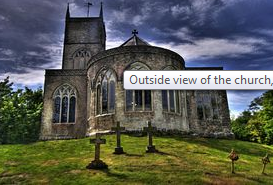Moreton is an attractive and character-filled village as many in Dorset are. However, it sets itself apart with a number of unusual associations of international reknown. Quiet, peaceful, off the beaten track, Moreton is a mixture of village styles – linear in part near the ford with a little thatched street, dispersed in other areas reflecting a time when occupants would have their own field patches to cultivate.
Essentially, Moreton centres on the large Georgian house, home to the Frampton family since at least the 14th century. Nearby, and close to the site of earlier Frampton houses, the village church and the thatched-roofed street form the recognisable part of the village and further afield lie the farms making up what Thomas Hardy described as the ‘vale of the great dairies’.
The old wooden village hall lies a quarter of a mile to the west of the street yet represents the centre of the dispersed part of the village. The village hall and two Nissen huts (one in a farm yard, another in a field) are the last remnants of the locally billetted US Army stationed here and elsewhere in preparation for the invasion of mainland Europe on D Day.
Dorset is full of lovely villages similar to Moreton. However, various elements of Moreton set it apart – the amazing windows in St Nicholas’ and St Magnus’ Church; the longest ford in the south of England; the grave of Lawrence of Arabia and the seat of James Frampton who, as High Sherriff of Dorset (and also the landlord) arrested the Tolpuddle Martyrs.
The St Nicholas’ and St Magnus’ Church windows are engraved or etched glass – the original standard stained glass was destroyed (as was half the church) by a stray bomb from a German WW2 aircraft. Over the next three decades local fundraising and donations allowed the church to become the most complete work of the famous Laurence Whistler. A visit to this lovely bright and peaceful church is a must.
T.E.Lawrence was stationed at nearby Bovington and rented (then bought) his cottage, Clouds Hill, from his cousins the Framptons. They were the landlords of Moreton Estate. On his untimely death his mother, who was abroad at the time, asked the Framptons if Lawrence could be buried in the graveyard. This request was granted and photographs in the village tearooms show the great and the good attending his funeral. These include Sir Winston and Lady Churchill and Seigfried Sassoon, as well as the choir boys from the village school (now the tearooms). His gravestone lies not at the church itself but in the removed churchyard near the garden centre. The portico structure marking the churchyard has moved from its original location opposite the tearooms. Lawrence’s grave is under the Cypress tree at the far end of the churchyard.
Geology has blessed the village with what must be one of the longest fords in the country – at least 70 yards across, frequently traversed by horses heading off into the forestry to the north. The ford is paired with a narrow footbridge and is another tranquil spot for the visitor to enjoy.
The association with the Tolpuddle Martyrs is less well known, though in his time sherrif James Frampton was widely linked to what became an internationally renowned incident. While it is generally acknowledged that the Martyrs were treated badly, it is less well understood that Frampton’s actions were a product of his youth. He is held to have been one of the pimpernels liberating the French aristocracy from the guillotine and he saw the barn burning, rioting and destruction of agricultural machinery as a deeper threat. Most of the Martyrs returned and it is interesting to note that the descendants of both the Martyrs and Framptons are still to be found in Moreton and Tolpuddle!
